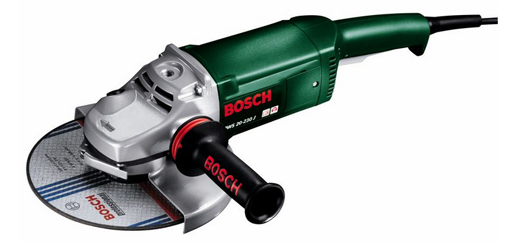Tools and Equipment
3. Hazards resulting from the use of portable electric tools
This section refers to portable tools powered by electricity and whose use if frequent in electrical installation work. Among these tools, the most commonly used are:
Grinders (radial), drills, jigsaws and screwdrivers.
Most important hazards:
- Electrical Contacts.
- Blows and cuts to the hands or other parts of the body.
- Eye injuries due to the projection of fragments or particles.
- Sprains due to very abrupt movements or strains.
- Noise.
- Fires.
Principal causes:
- Inappropriate use of the tools.
- Use of faulty tools.
- Use of poor quality tools.
- Not using personal protection equipment.
- Forced postures.
- Use in the presence of combustible substances.
Preventive measures:
- Use quality tools in accordance with the type of work to carry out and which have the CE mark.
- Personnel must be authorised by the firm to use the tools.
- Properly instruct personnel in the use of each type of tool.
- Check that the outside casing of tools is in a good state of repair and that they have the appropriate protective or usage elements, which must never be dismantled, except with express authorisation from the Foreman.
- Check the state of the power lead (there should be no bare copper wires or connections with insulating tape) and the connection plug (do not connect wires directly). Do not transport tools hanging them from the power lead.
- Choose the appropriate implement for the tool (disc, drill bit, etc.) and for the job to do. Said implement should be in good condition (disc not worn, sharpened drill bit, etc.).
- Unplug the tool when changing the implement and when it is not going to be used.
- Use the appropriate key to change the implement.
- Use tools that have double insulation protection and connect them to a switchboard protected by a current-operated circuit-breaker.
- Avoid working in the vicinity of combustible materials. Should this be necessary, cover such materials with some kind of incombustible element (screens, steel plates, fireproof blankets, damp canvas, etc.), as well as having extinguishers near to the job.
- Fasten small-sized materials using suitable clamps before working on them.
- Hold tools with both hands. Do not adopt forced postures or exercise excessive pressure on the tool.
- Use safety footwear when faced with the risk of blows to the feet resulting from tools falling when being handled.
- Use protective goggles and a visor (in the case of radial grinders ) in all cases and above all when there is a risk of projected particles.
- Use ear protectors when working with tools takes up a substantial part of the working day and whenever the noise level exceeds the legally stipulated 80 dB (A).





